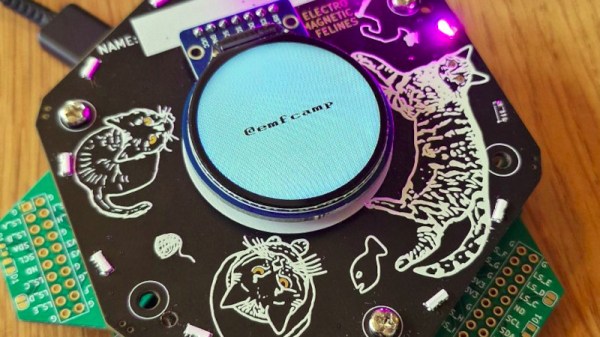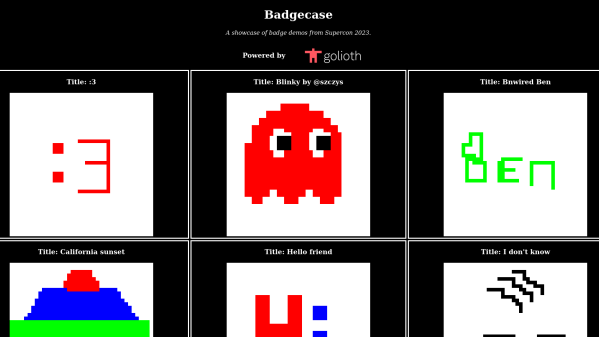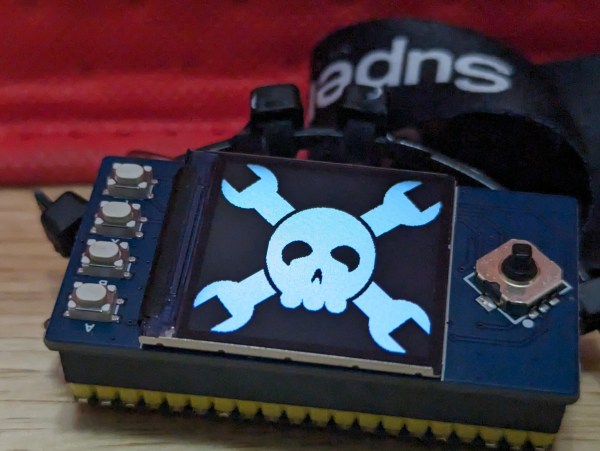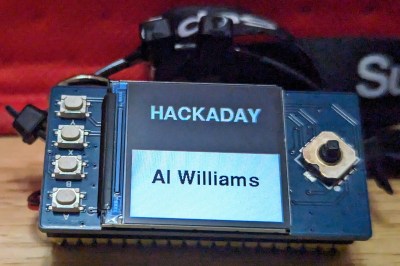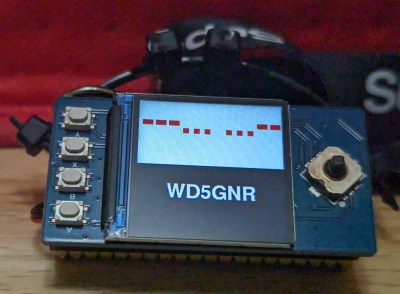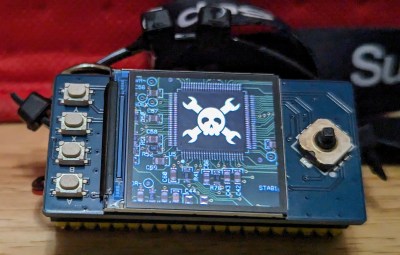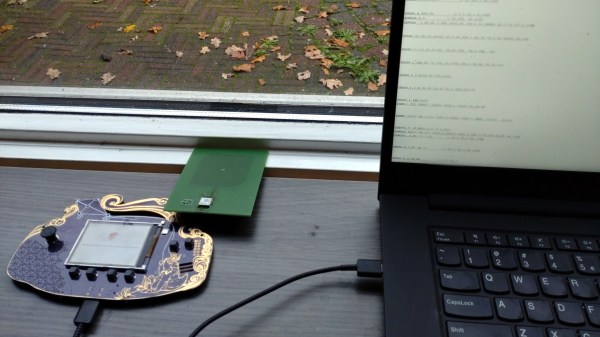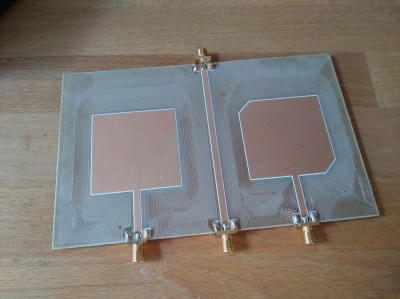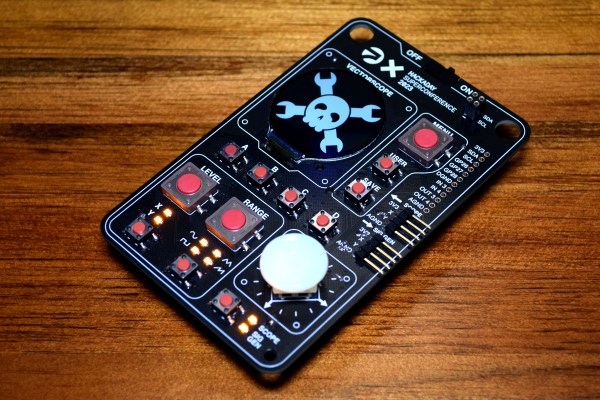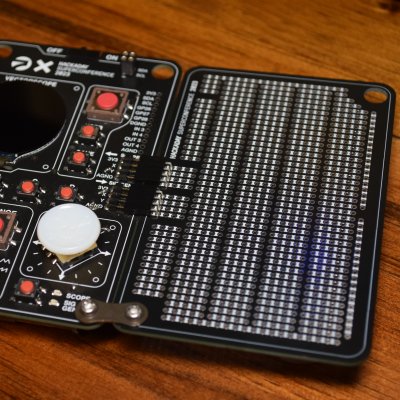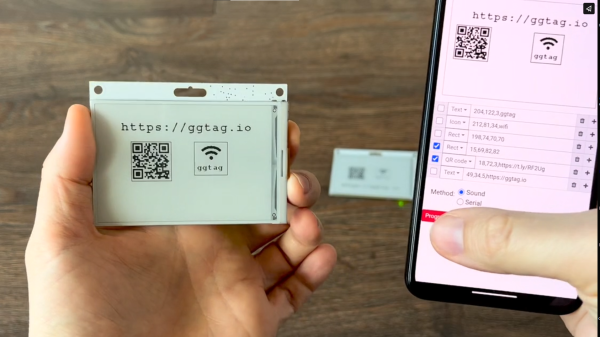One of our favorite parts of Hackaday Supercon is seeing all the incredible badge add-ons folks put together. These expansions are made all the more impressive by the fact that they had to design their hardware without any physical access to the badge, and with only a few weeks’ notice. Even under ideal conditions, that’s not a lot of time to get PCBs made, 3D print parts, or write code. If only there was some standard for badge expansions that could speed this process up…

But there is! The Simple Add-On (SAO) standard has been supported by the Supercon badges since 2019, and the 2×3 pin connector has also popped up on badges from various other hacker events such as HOPE and DEF CON. There’s only one problem — to date, the majority of SAOs have been simply decorative, consisting of little more than LEDs connected to the power pins.
This year, we’re looking to redefine what an SAO can be with the Supercon Add-On Contest. Don’t worry, we’re not changing anything about the existing standard — the pinout and connector remains the same. We simply want to challenge hackers and makers to think bigger and bolder.
Thanks to the I2C interface in the SAO header, add-ons can not only communicate with the badge, but with each other as well. We want you to put that capability to use by creating functional SAOs: sensors, displays, buttons, switches, rotary encoders, radios, we want to see it all! Just make sure you submit your six-pin masterpiece to us by the October 15th deadline.
Continue reading “Supercon 2024: May The Best Badge Add-Ons Win”


